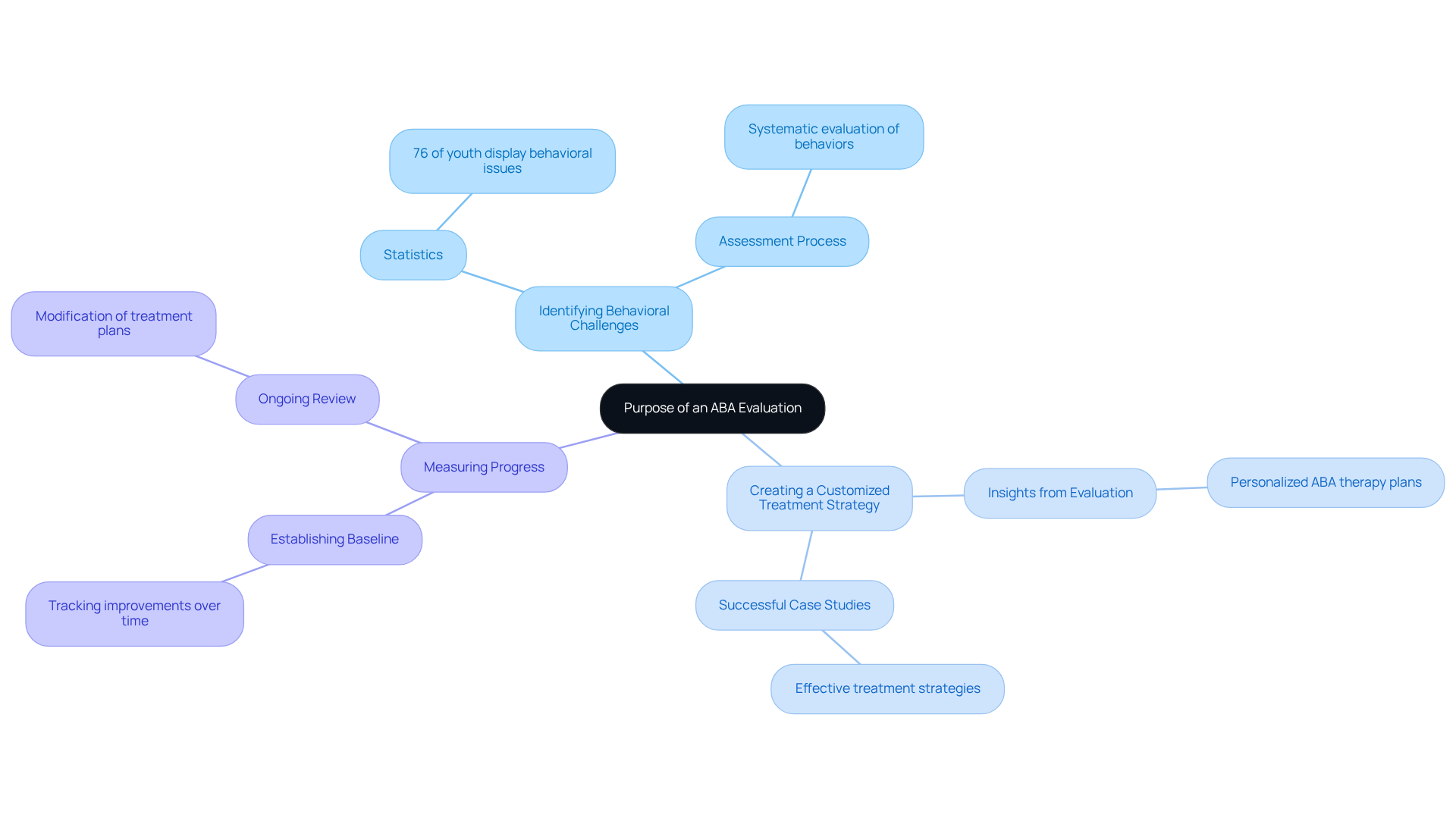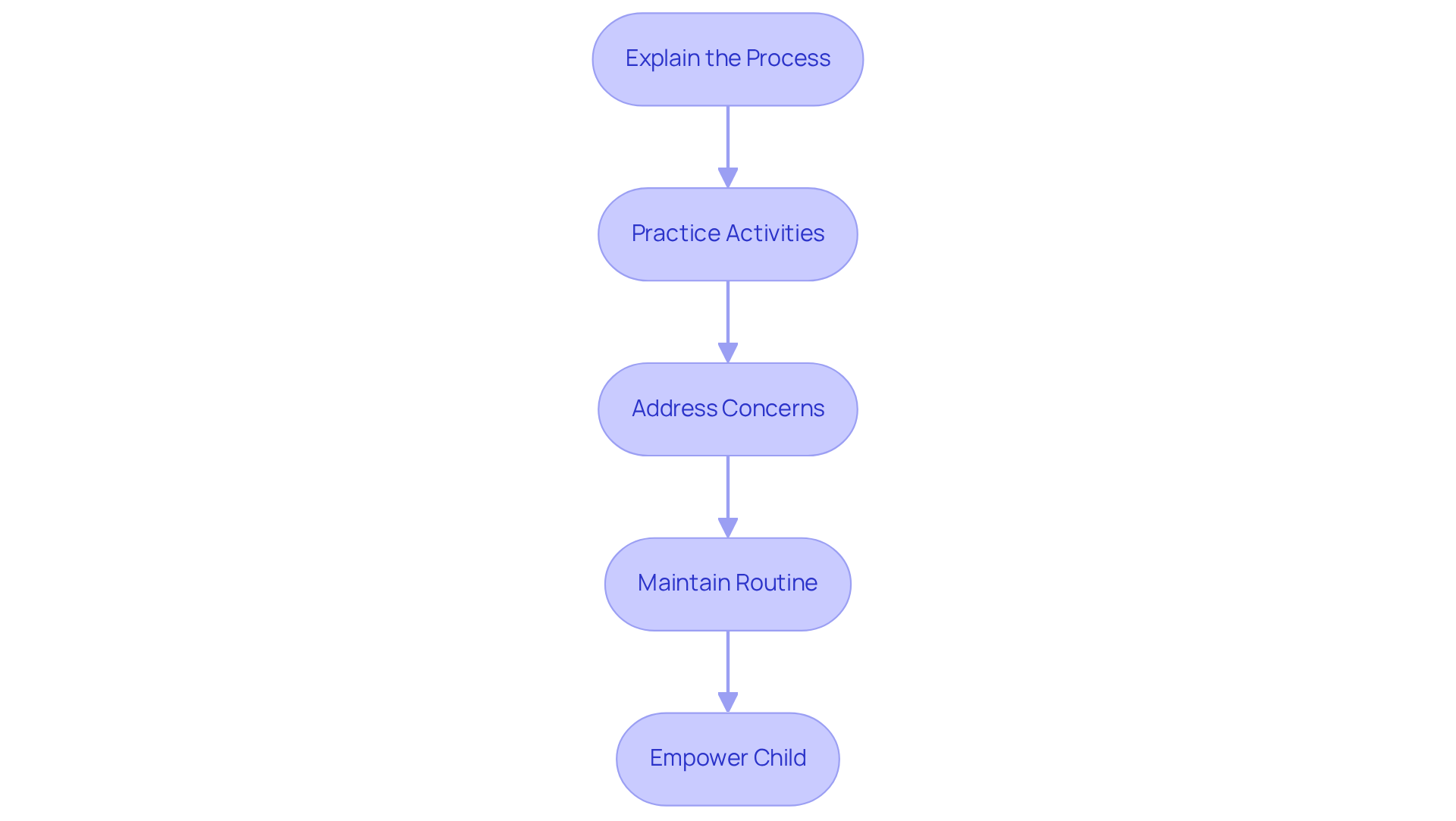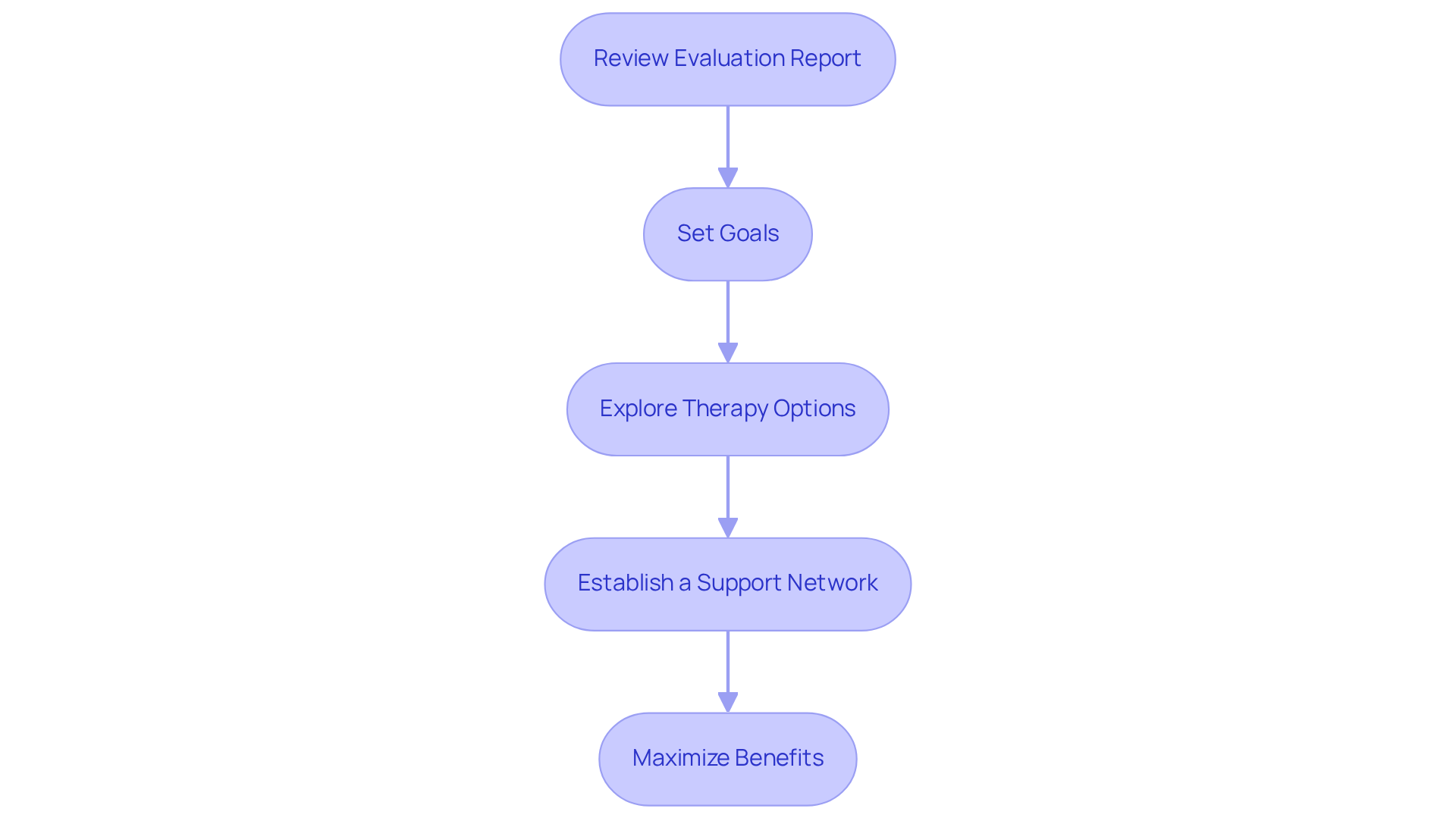October 19, 2025

Navigating the ABA evaluation process requires a strategic approach, and there are four essential steps to ensure success:
Each of these steps is supported by evidence and expert insights, underscoring the importance of thorough preparation and active involvement to enhance the child's experience and outcomes from the evaluation.
Navigating the ABA evaluation process is often perceived as a daunting experience for families, particularly when the stakes involve comprehending a child's distinct behavioral and developmental needs. This guide seeks to demystify the evaluation journey, presenting practical steps that empower parents and caregivers to effectively support their children.
What challenges may arise during this critical assessment?
How can families ensure a seamless process while maximizing the evaluation's benefits?
An ABA evaluation fulfills various crucial roles, primarily focused on understanding a young person's behavior and their developmental requirements. Key objectives include:
By understanding these objectives, parents can approach the assessment process with clarity and purpose, fostering a collaborative environment with evaluators. Experts in psychology stress that comprehensive ABA evaluations are essential for successful intervention, ultimately supporting the growth and development of young individuals. As specialists emphasize, 'Early intervention with ABA evaluation is essential for favorable results in autism,' highlighting the importance of prompt assessments.

Preparing your child for an ABA evaluation involves several essential steps that can significantly impact their experience:
By following these steps, parents can empower their children to approach the ABA evaluation with confidence and a positive mindset.

On evaluation day, families can expect a structured and insightful experience.
Arrival and Introduction: Upon arrival, families will meet the evaluators, who will explain the process and address any questions. This initial interaction establishes a welcoming tone for the day.
Assessment Activities: The aba evaluation typically encompasses a series of structured activities aimed at assessing various skills, including communication, social interaction, and problem-solving. These activities are crucial for understanding the young person's abilities and needs.
Observation: Evaluators will observe the youth in diverse settings, which may include one-on-one interactions and group activities. This comprehensive observation facilitates a well-rounded evaluation of the young one's skills.
Feedback Session: After the assessment, parents will engage in a feedback session where evaluators discuss their observations and initial impressions. This session offers valuable insights into the young person's performance and potential next steps.
Families should also note that the average length of an ABA evaluation can vary, typically lasting between two to four hours, depending on the child's needs and the specific tools utilized. Understanding these elements can help families feel more comfortable and involved during the assessment.
It's essential to recognize that success rates of ABA evaluation often exceed 89%, as endorsed by reputable health authorities, including the US Surgeon General, who acknowledges ABA evaluation as an effective, evidence-based treatment. Moreover, recent revisions to ABA evaluation methods and ACE Provider standards reflect the evolving nature of ABA services, ensuring families receive the most current and effective care.

Following an aba evaluation, families must take essential steps to ensure effective support for their child's development.
Review the Evaluation Report: Thoroughly examine the report from the evaluators, highlighting key findings and recommendations that will guide future actions. Understanding the average time taken to review these reports can help set expectations for the process.
Set Goals: Collaborate with the evaluators or a Board Certified Behavior Analyst (BCBA) to create specific, measurable objectives tailored to the individual's unique needs. As one advocate noted, 'ABA gives individuals with autism the ability to take control of their lives and reach goals they may never have thought possible.' Remember, 'ABA is about more than just treating autism—it’s about giving individuals the tools and strategies to actively participate in their own lives.' This emphasizes the importance of setting empowering goals.
Explore Therapy Options: Investigate various ABA therapy alternatives that align with the individual's requirements and family preferences, ensuring a good fit for ongoing support. The flexibility of ABA therapy allows for tailored interventions that meet individual needs, which is crucial for effective outcomes.
Establish a Support Network: Connect with other parents, support groups, or professionals who can offer guidance and encouragement throughout the therapy journey. Building a community can provide invaluable emotional support and resources.
By proactively planning these next steps, families can effectively support their child's growth and maximize the benefits of the recommendations made during the aba evaluation.

Navigating the ABA evaluation process is a crucial step in supporting a child's developmental journey. Understanding the purpose of the evaluation, preparing effectively, and knowing what to expect can significantly enhance the experience for both the child and their family. This structured approach clarifies the objectives of the evaluation and empowers families to advocate for their child's needs.
Key insights discussed throughout the article include:
Preparing a child for the evaluation day by explaining the process, practicing activities, and maintaining a consistent routine can alleviate anxiety and foster a positive outlook. Moreover, engaging in a thorough review of the evaluation report and setting measurable goals ensures families are equipped to implement the recommendations effectively.
Ultimately, the ABA evaluation process serves as a cornerstone for successful interventions that can profoundly impact a child's life. By actively participating in each step—from preparation to post-evaluation follow-up—families can create a supportive environment that promotes growth and development. Embracing this journey not only enhances the child's potential but also fosters a sense of community and resilience among families navigating similar paths.
What is the purpose of an ABA evaluation?
An ABA evaluation is focused on understanding a young person's behavior and developmental requirements, identifying behavioral challenges, creating customized treatment strategies, and measuring progress over time.
How does an ABA evaluation identify behavioral challenges?
The evaluation systematically assesses specific behaviors that may impede a child's development or social interactions, highlighting the significance of addressing these challenges.
Why is creating a customized treatment strategy important?
A customized treatment strategy relies on insights obtained from the ABA evaluation, which are essential for formulating a personalized ABA therapy plan that caters to the child's distinct needs.
How does an ABA evaluation measure progress?
An ABA evaluation establishes a baseline to track improvements over time, ensuring that interventions are effective and allowing for ongoing review and modification of treatment plans.
What do experts say about the importance of ABA evaluations?
Experts in psychology stress that comprehensive ABA evaluations are essential for successful intervention and support the growth and development of young individuals, emphasizing that early intervention is crucial for favorable results in autism.
Our expert recruitment strategies and AI-driven sourcing ensure that you receive top-notch candidates quickly, without compromising on quality. Whether you’re looking for BCBAs, Clinical Directors, or RBTs, we’ve got you covered.